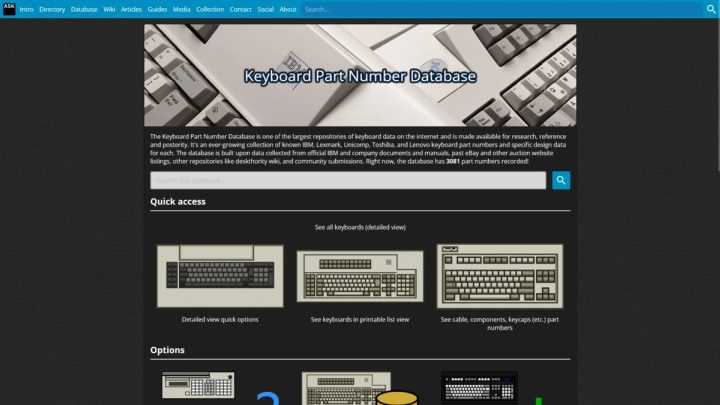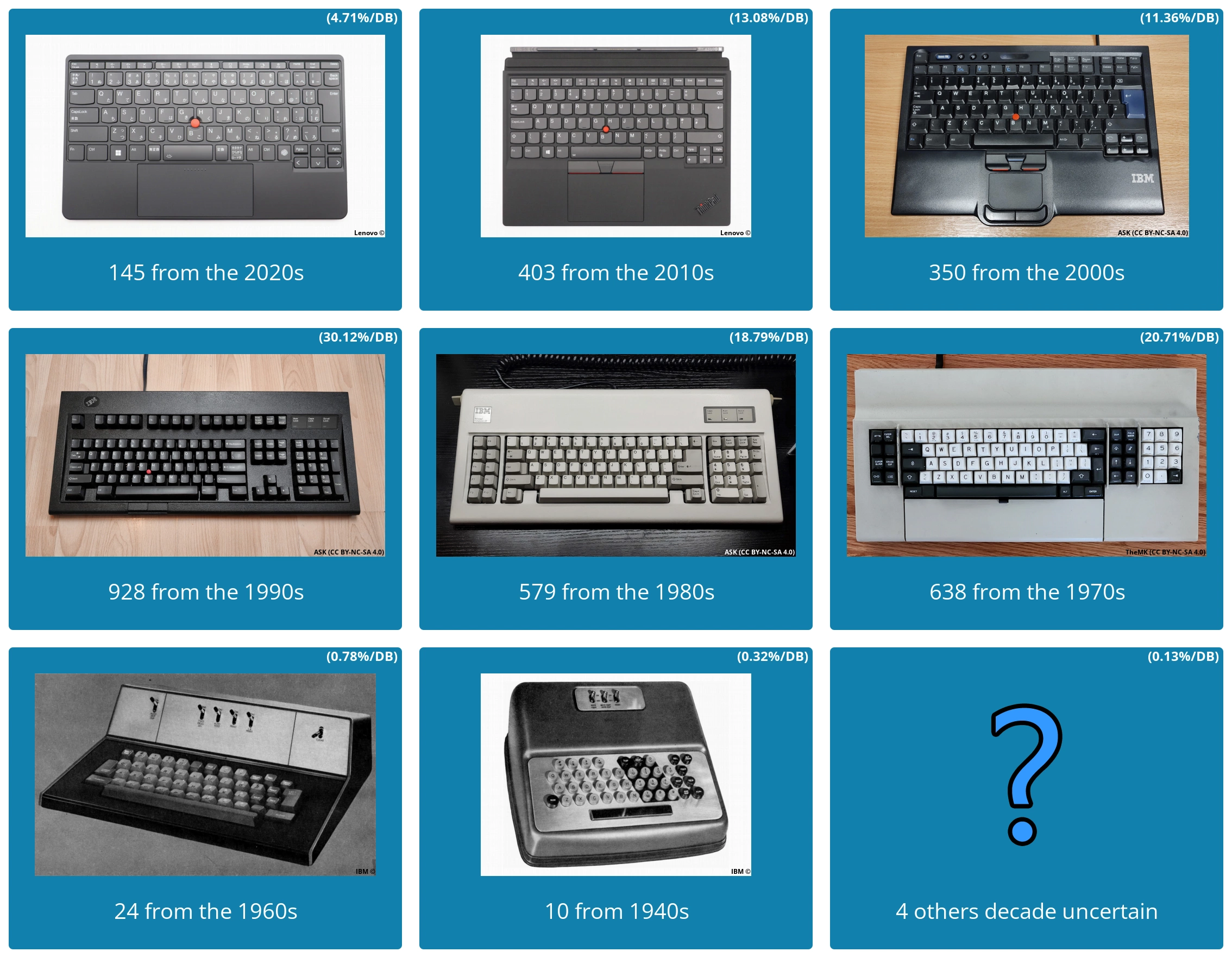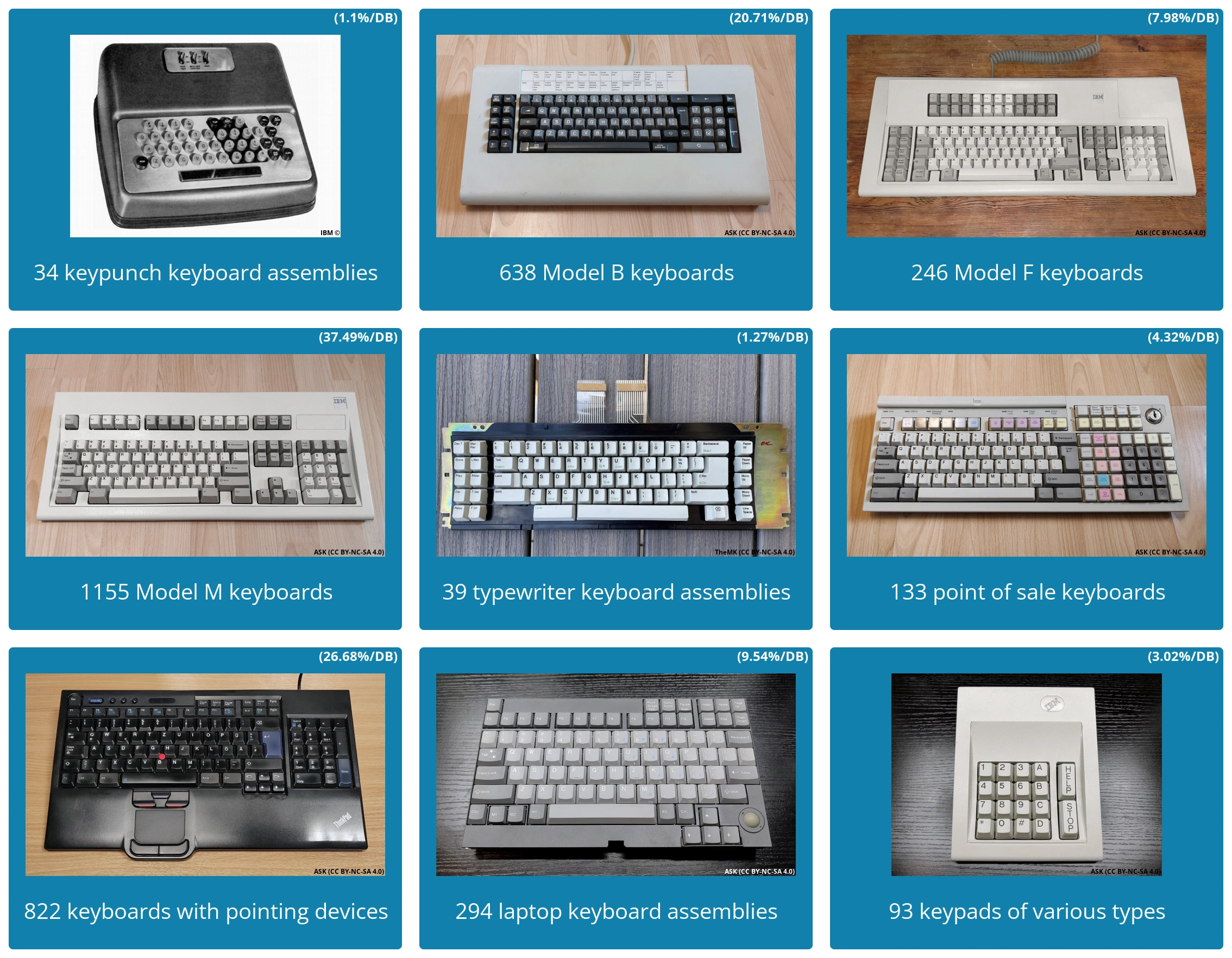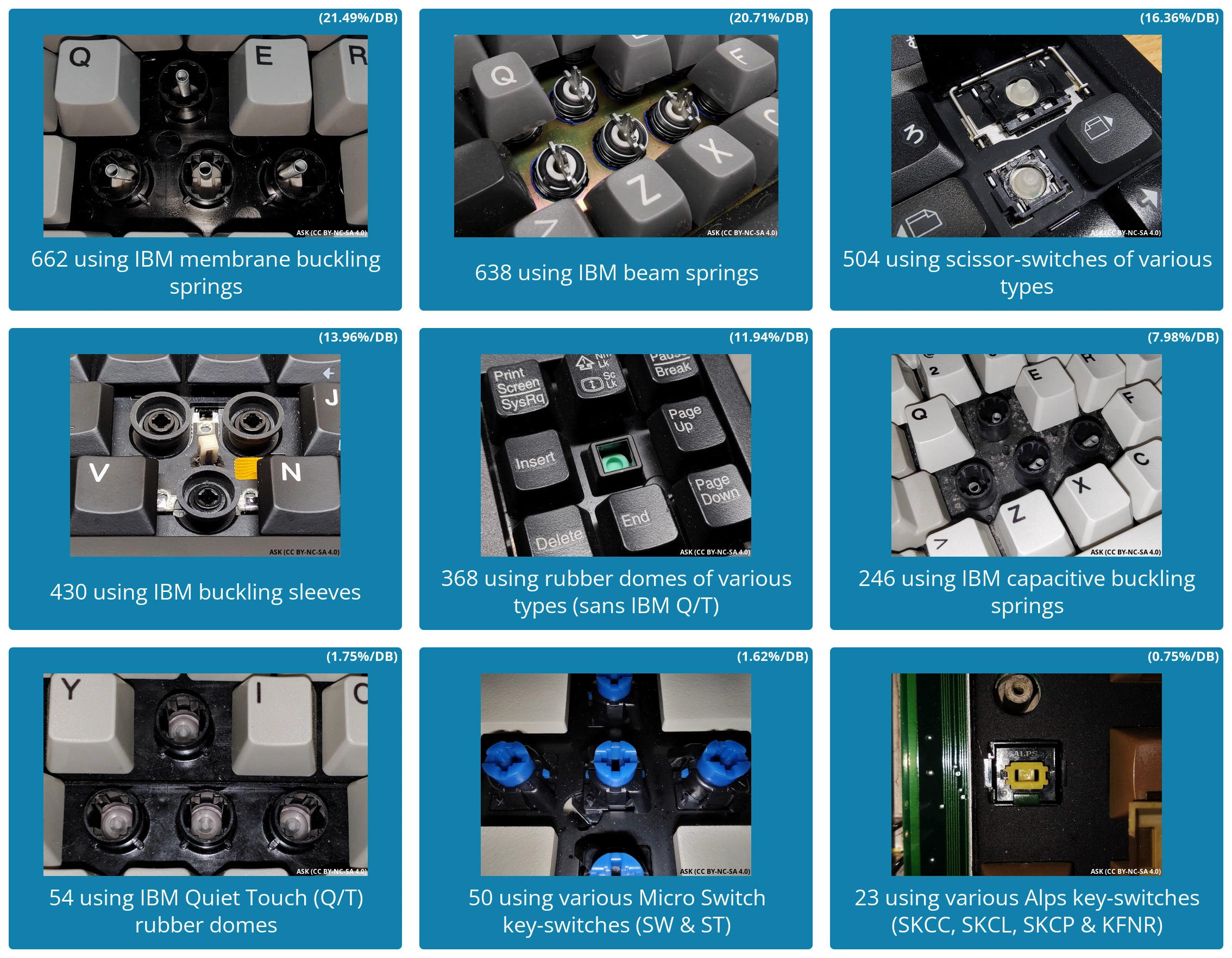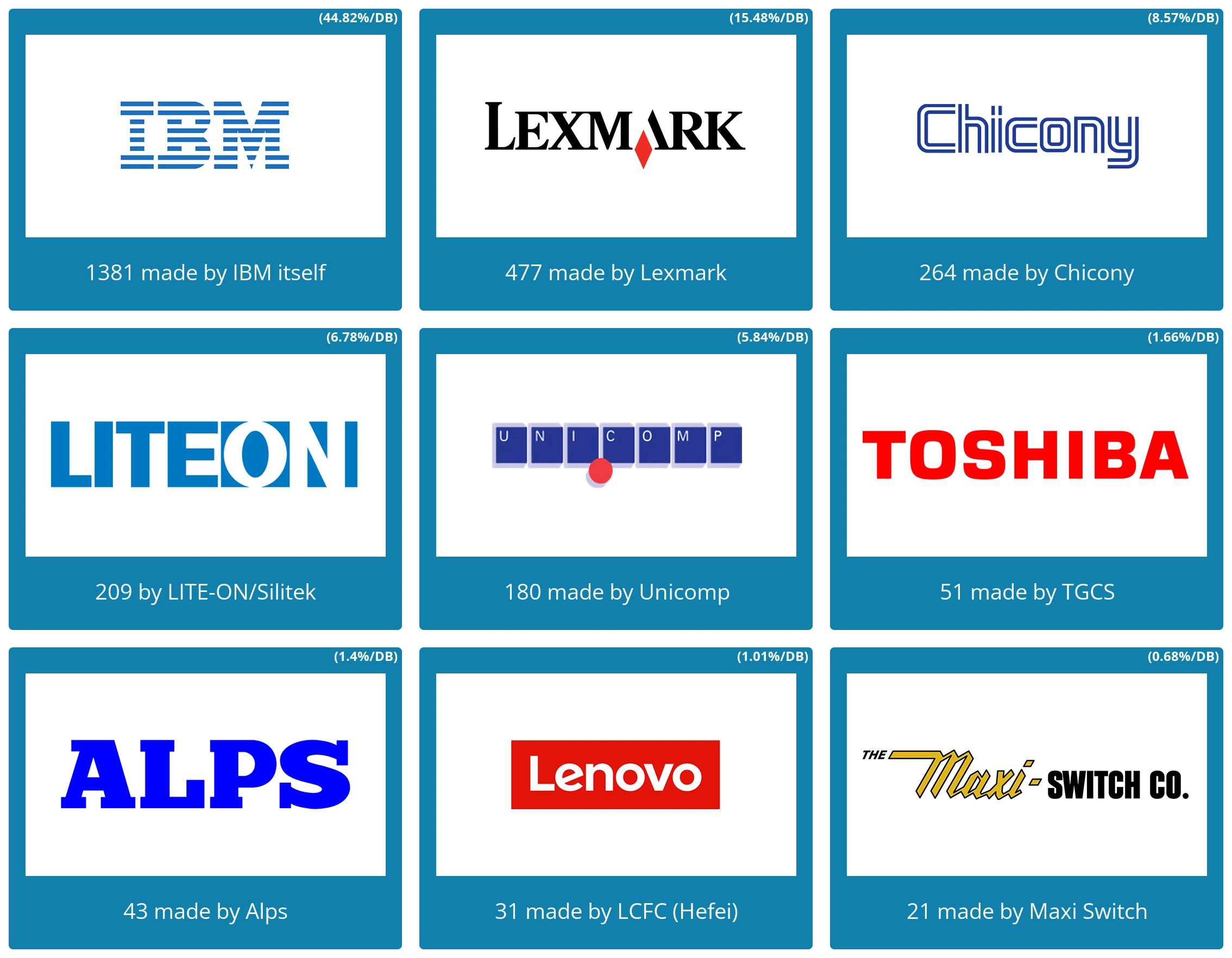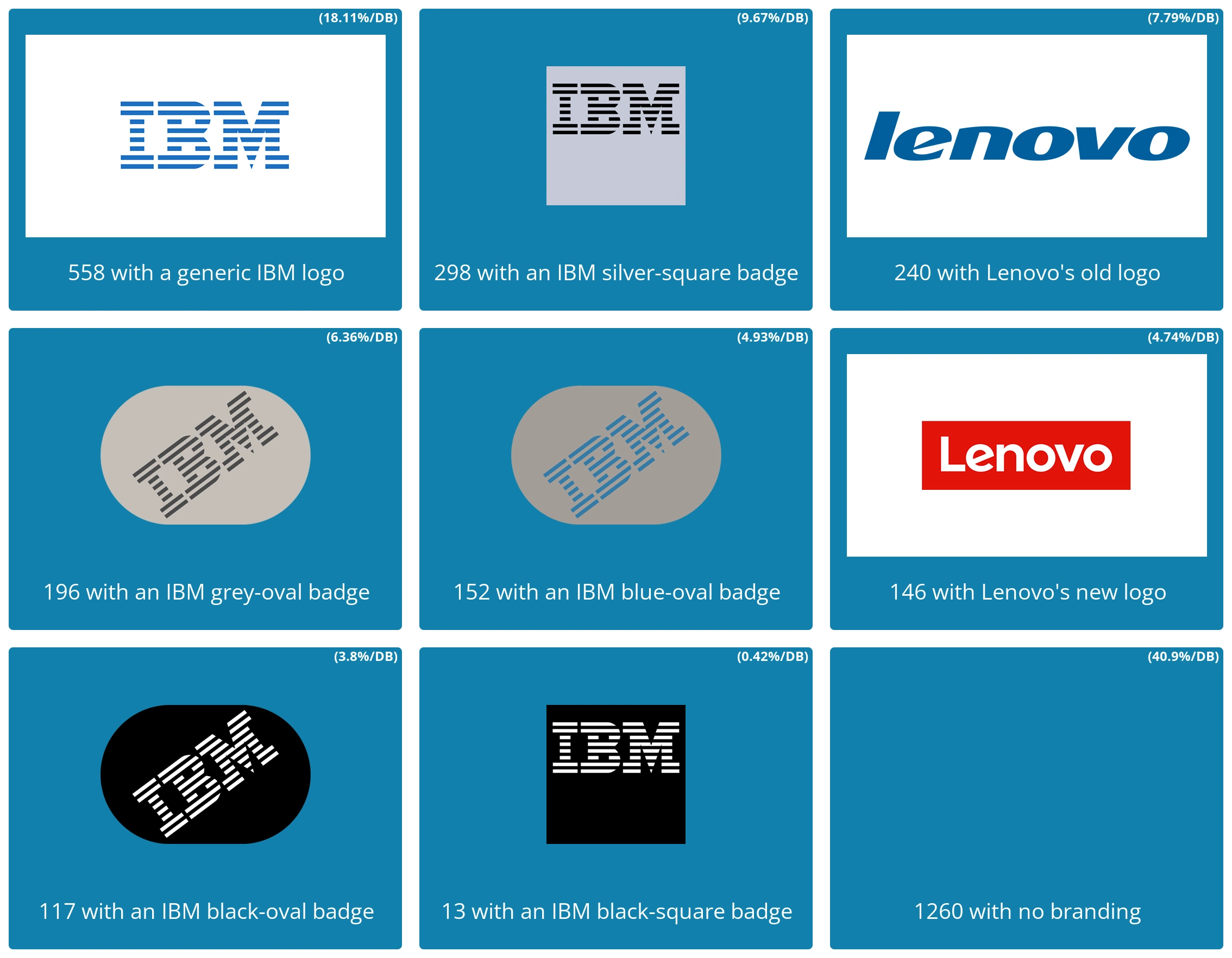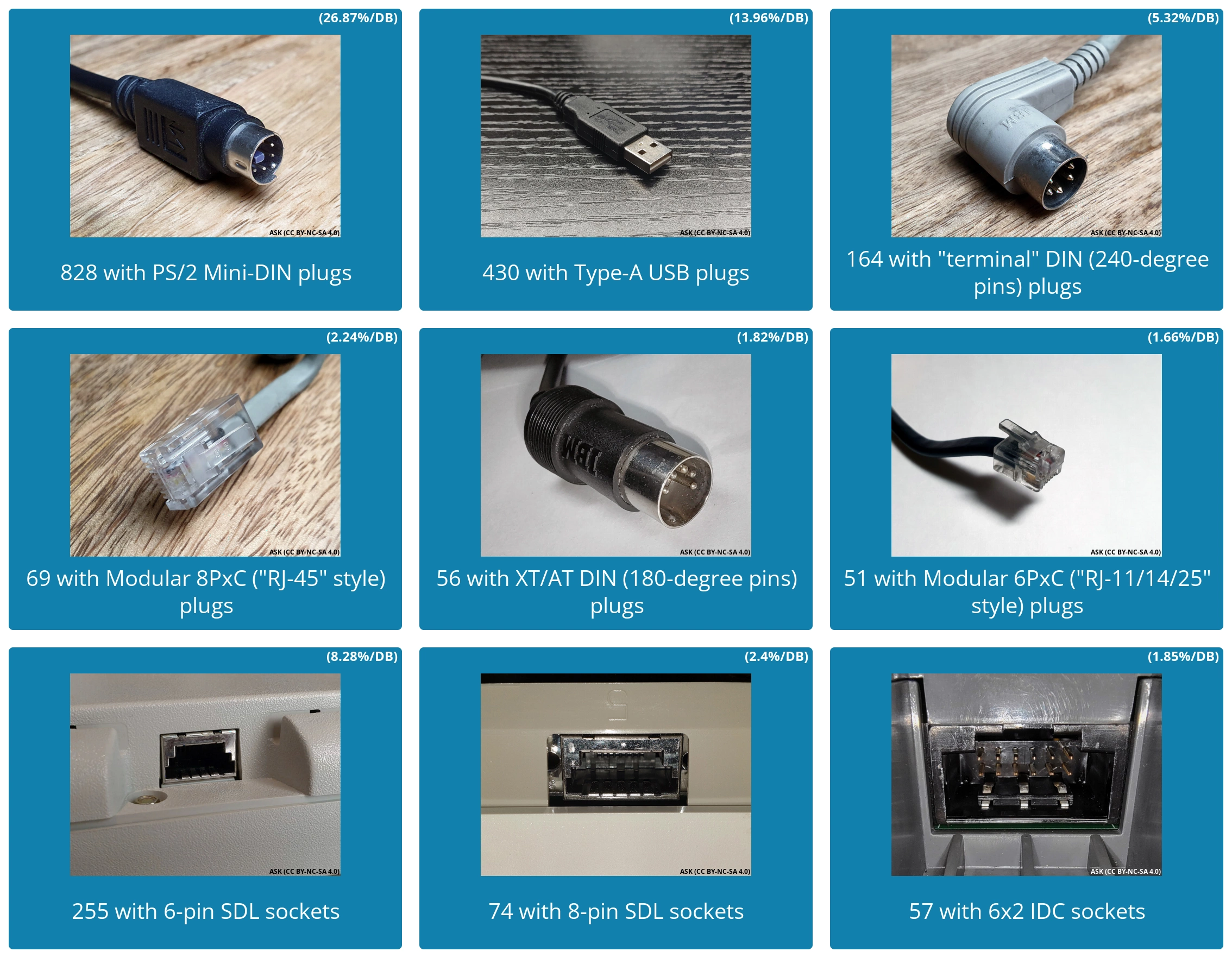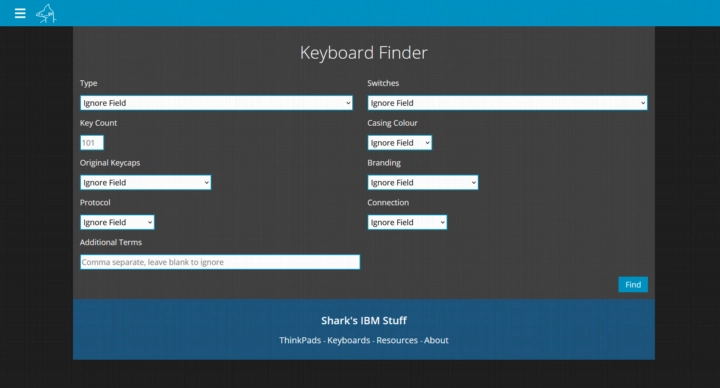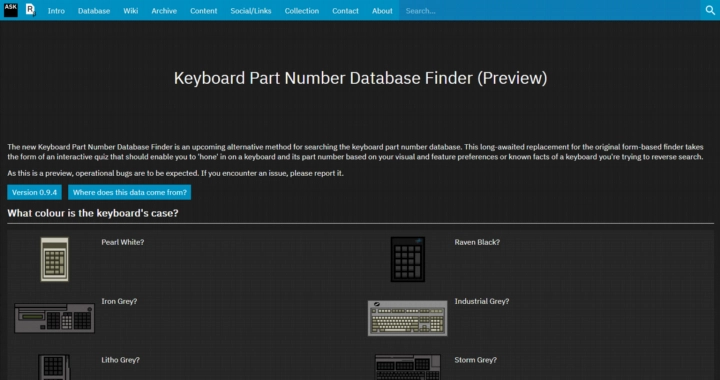Just in time for the New Year's, the ASK Keyboard Part Number Database now stores over 3,000 part numbers! This is historical and present data covering IBM and family (IBM itself, its descendants, and companies that have acquired IBM divisions, staff and IP) keyboards from 1949's IBM 024/026 Card Punch Keyboard to the 2020s' Unicomp Mini Model M and Lenovo ThinkPad Bluetooth TrackPoint Keyboard and Stand (model TKBBTDU811). Whilst I feel we're still a while away from a complete record and picture of the IBM keyboard timeline (if that's even possible to achieve!), I'm gratified to reach this new milestone. Just like I did in June 2022 for the 2,500+ milestone, I've used data from the database to present some cool stats on IBM and family keyboards in a series of infographics. But this time around, I've also provided some commentary.
Contents
About the database
The Keyboard Part Number Database is one of the largest repositories of keyboard data on the internet and is made available for research, reference and posterity. It's an ever-growing collection of known IBM and family keyboard part numbers and specific design data for each. As already stated above, keyboards considered to be "IBM and family" are of any company that makes/made keyboards for IBM, was a former division of IBM, or purchased IBM's IP and continues producing their former or derivative designs. Namely, this includes Lexmark, Unicomp, Lenovo and Toshiba Global Commerce Solutions. The project aims to include all keyboards applicable regardless of popularity and hype. The project began in September 2019.
It's built upon data collected from official documents and manuals, past eBay and other auction website listings, other repositories like deskthority wiki, and community submissions. At the time of writing, there are 3,081 entries in the Database.
- You can access it at https://sharktastica.co.uk/database
Recent database upgrades
Compared to the last update in June 2022, the Database has received several improvements worth highlighting!
New data points
10 new data points have been added for database entries to record specific keyboard features worth noting. I added these as an attempt to standardise information that could previously be entered into the generic "Additional Notes" field. If a keyboard has at least one of the following data points populated, it will be shown to the user in the new "Accessories & Other Features" field.
- Backlighting
- Charging cable/options
- Clicker assembly (internal solenoid)
- Compartment for host computer's/terminal's guide
- DIP switches
- Fingerprint reader
- Internal buzzer
- Internal speaker
- Key-lock
- Magnetic stripe reader
Not all existing entries have been updated with data for these options yet. As such, indications for these features may still be present in their "Additional Notes" field for the time being.
Improved searching
In November 2023, I overhauled the Database's search engine to improve speed and how users can better search it. Most notably, I've added support for web search like exclusions (eg, -something) to make it easier to refine a search. Details on how to use these are in the Keyboard Part Number Database FAQ.
Comments & observations
- I expected the '90s to have the most keyboards within for a couple of reasons. IBM was very busy during this period and released a lot of PS/2, PS/1, PC series, Aptiva and RS/6000 models, released many InfoWindow terminal models and continued to support its older terminals with FRUs, and of course, the ThinkPad struck success. Geopolitical changes of the early '90s also meant that for most system releases, there were an increasing number of regions to consistently produce keyboards for (especially Eastern Europe). In my experience, the quality of IBM documentation through its announcements, guides and manuals was at its peak in the '90s. Such resources are a lot better at producing results since part numbers are usually provided in lists (by contrast, documenting via in-person and marketplace discoveries takes a lot of time and effort to produce results). Some of IBM's US-based keyboard production assets also changed hands (ie, Lexmark and eventually Unicomp) and the result was IBM-originating keyboard designs being produced for many different companies, providing more keyboards to document.
- The high number in the 1970s is very interesting (which is entirely thanks to the IBM Model B family), but I'll comment more about that in a later section.
- The four "uncertain" keyboards are ones where I don't know exactly when they were first launched or produced. I could probably guess a rough date, but for the sake of accuracy, I haven't recorded that conjecture.
Comments & observations
- I think there are probably a lot more keypunch keyboard assemblies waiting to be documented. Only some IBM 024/026 and 029 era Card Punch keyboards are covered; there are probably a lot of part numbers for IBM 129, various regional variants, and combinations of toggle switches waiting for indexing.
- I don't think there is any surprise to IBM Model Ms being as numerous as shown. Model M-designated keyboards were used for so many types of computers and terminals and continue to be produced today.
- The IBM Model F family being numerically overshadowed by its predecessor and successor also makes sense on paper - they were only IBM's flagship keyboard design between 1981 and 1984.
Comments & observations
- I think this section highlights how interesting the IBM Model B records are. Whilst the Model M family looks comfortably larger in the previous section, when you break the Model M family down into its two main key-switches, it's incredible that IBM beam springs are numerically standing toe-to-toe with IBM membrane buckling springs. I attribute this to IBM Model Bs being essentially unchallenged by other IBM designs during the '70s. IBM did have other keyboard designs such as the IBM elastic diaphragm encoded keyboards and a couple of typewriter-based keyboards, but they were pretty niche by comparison. Model Ms (whilst very successful) still partially shared the limelight with Model Fs during the early days and were challenged by the rise of Chicony, Silitek and NMB OEM IBM rubber dome keyboards in the '90s.
- Clearly, IBM membrane buckling springs are still a majority within the Model M family (~57.3%), but IBM buckling sleeves clearly make up a sizeable chunk of it (~37.2%). I bet many would be surprised to see buckling springs not be the absolute majority a lot of people think they are (especially those from before the contemporary interest in IBM buckling sleeves) - for most people, Model M = buckling spring. Based purely on numbers, that statement is not really tenable, but I don't expect sentiment to change due to buckling springs' popularity.
- I think in reality, both the scissor-switch and rubber dome statistics are probably quite a bit higher than they are here. I think my focus on the more 'popular' types of keyboards is largely behind this. I hope to properly cover such keyboards in the future for the sake of completeness.
Comments & observations
- It's interesting to see that despite Unicomp being the stewards of the Model M family longer than IBM and Lexmark, they have seemingly produced a lot fewer individual keyboards. I have a few thoughts about this. Obviously, Model Ms became a more niche keyboard design after rubber dome keyboards took over. But I also think most don't realise IBM continued making Model M and Model M based keyboards for their point of sale business (Models M7 to M11 (RPOS), pre-MPOS and MPOS family keyboards), so Unicomp was still "competing" with IBM in terms of numbers until 2012 (when IBM Retail Stores Solutions was sold to Toshiba TEC). Unicomp also doesn't produce the level of documentation IBM does, so there's no easy way to find Unicomp self-brand part numbers other than marketplace research and looking through their storefront. Speaking of storefront; Unicomp only shows a fraction of the possible keyboards it could make on it - having a look at their Keyboard Configuration Tool can give you a sense of what they could really do. Then of course there's the fact that Unicomp mostly makes keyboards for third-party brands and most of them don't actively list possible part numbers. As such, I believe Unicomp's actual number is quite a bit higher than what's shown.
- It's believed that Alps produced most of the keyboards that use their own named switches (the four mentioned in the previous infographic), so the fact the OEM statistic is higher than the key-switch one may appear conflicting. But the Database records Alps-made laptop keyboard assemblies that were excluded from the previous statistic since they're (currently understood to be) generic/unnamed designs.
Comments & observations
- I don't think there's much to talk about here right now. These statistics are what I expected. That said, I've recently been documenting a lot of modern Lenovo keyboards that use Type-C USB sockets and/or plugs, so I think a Type-C statistic will likely make it into the infographic for the next milestone and probably be in the top half.
More keyboards (duh!)
There's still a lot of work to do. As mentioned in previous comments throughout this post, IBM Card Punch keyboards, rubber dome and scissor-switch keyboards are obvious gaps in the database right now. Sure; the latter two aren't especially interesting, but I want to divorce my personal bias and interests and try to complete the project as thoroughly as possible. Late last year, I started the first part of tackling this by researching and indexing various tablet and tablet-style Lenovo ThinkPad keyboards.
Improved quality assurance
The Database project is now around 4 and 1/4 years old, and in that time, the number of data points and the quality of my recording and research have improved a lot. Whilst I strive to do my best, there is still quite a bit of data recorded in the 'early days' that is due for review. As such, I've been making a to-do list of database entries that haven't been updated in a long time to check up on and if needed improve/rewrite them. I recently pulled 35 entries as I assessed them to be of poor quality (hence why if you access the Database close to the time of writing, you'll notice that only 3,046 of the 3,081 total entries are available for viewing).
Keyboard Finder v3
I've continuously wanted a tool that would allow somebody to query the database without needing to look through detailed results and minimising the need for text input. I've attempted this twice in the past:
- Keyboard Finder v1 was an early attempt using a simple form to allow the user to pick some desired keyboard characteristics from lists and if needed provide some keywords.
- Keyboard Finder v2 was the second attempt that asked you questions with illustrated (using pixel art) choices that would be used to query the database with. This version is still technically available but it hasn't been updated in a long time and has some visual issues. I was never really happy with how it turned out.
Keyboard Finder v3 is now being developed as a replacement using real photos, more questions and better backend design to make updating it easier for me in the future. I don't have an ETA for v3 at this time, though.
A thank you!
Thank you for reading and a huge thank you to anyone who has supported me and my efforts over the last 4 years. It wouldn't be worthwhile if it wasn't helping anyone, so especially thanks to anyone who uses my resources.
Just as I said at 2,500+, the project is still far from finished. It's hard to even specify a 'finish line' because we really don't know how much we don't know about the keyboards left to find and document. Existing sources such as early internet websites/repositories and IBM's own resources are always at risk of going offline. All I can say is that I'll try my best and I still have no intention of stopping just yet! So, I'll see you at 4000!
Cheers!
- Public announcement SNPA-202401A
- Published 2024-01-04
